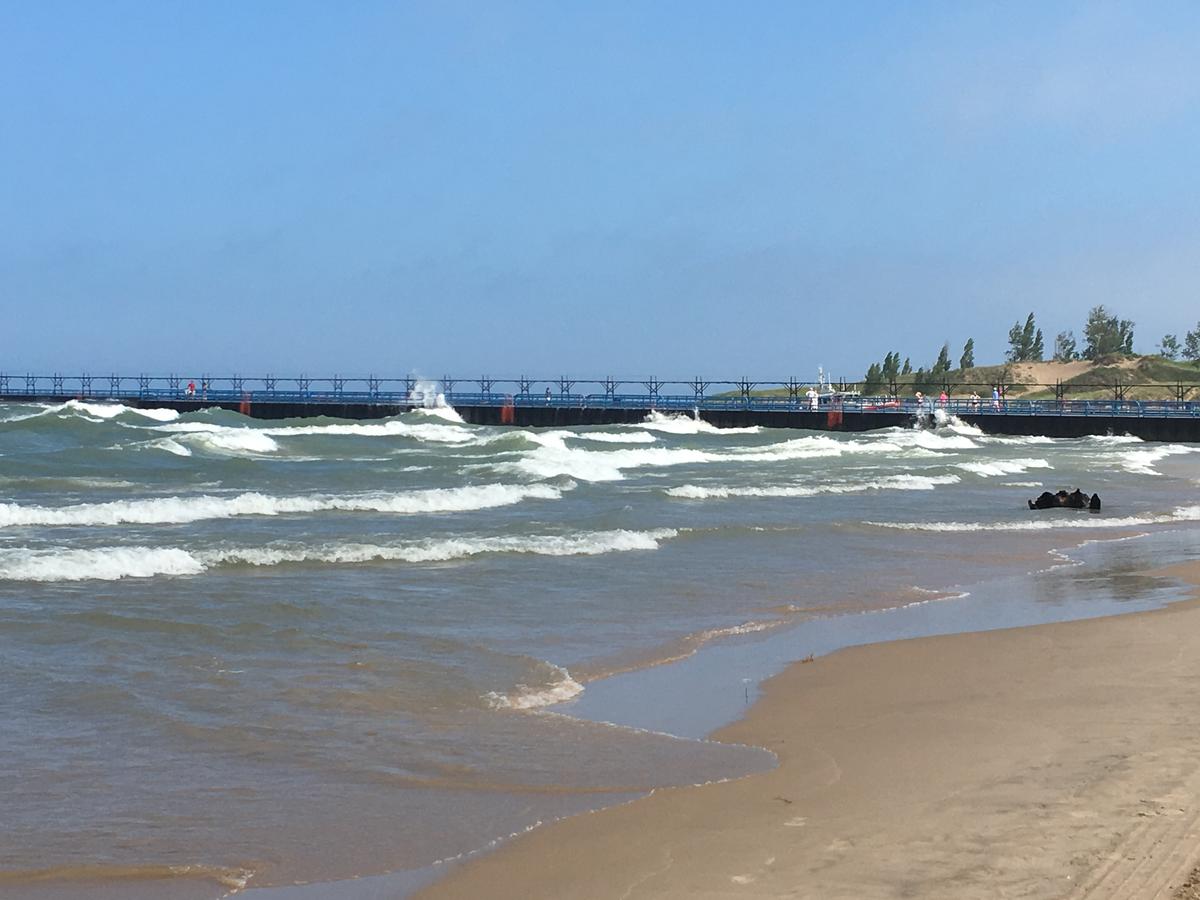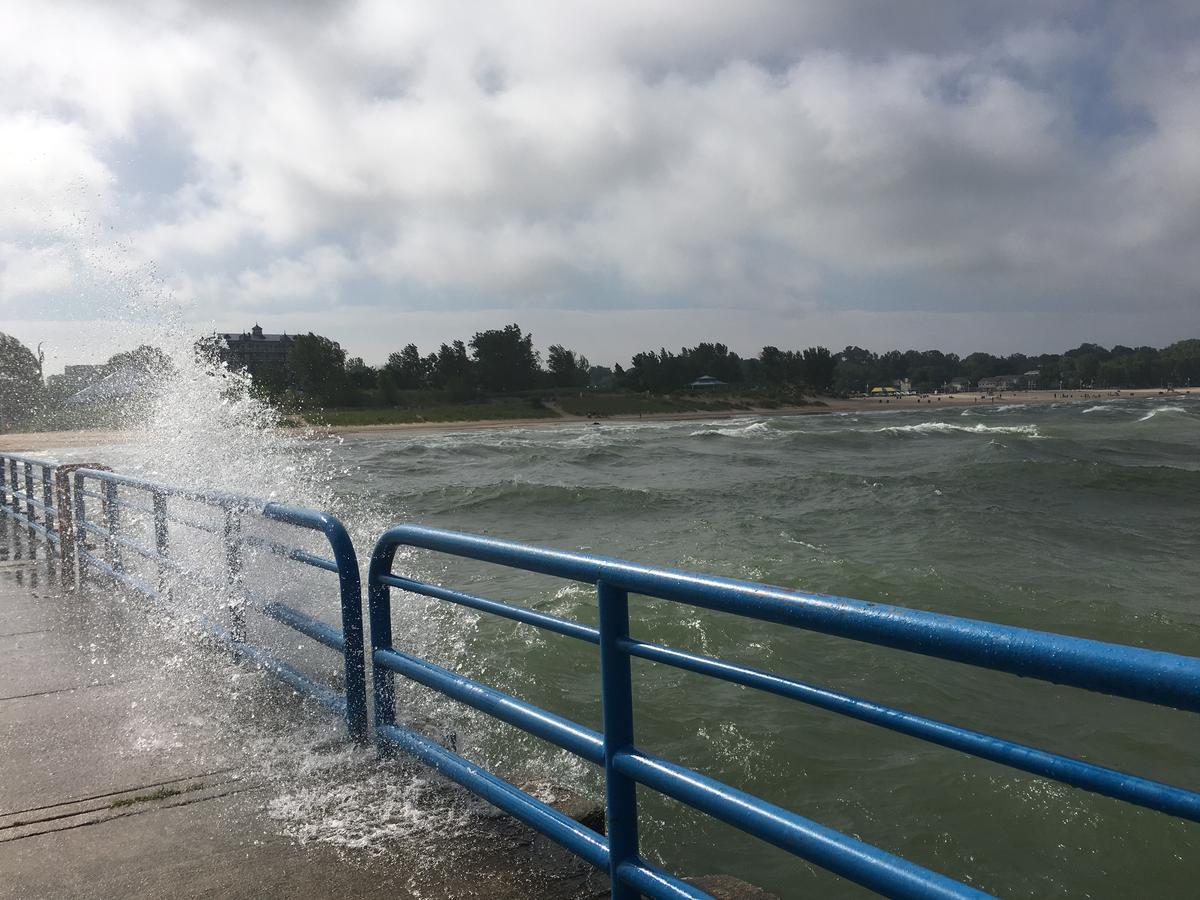By Elizabeth Miller
This story is part three of a series on dangerous Great Lakes currents and their impact on human lives in the region.
Dangerous currents and drownings go hand-in hand across the Great Lakes. But many are concentrated in Southwest Michigan’s Berrien Co.
The county has 50 miles of shoreline and its crown jewel is Silver Beach County Park. It’s straight out of a postcard: sandy beaches, a playground, and a big concession stand selling snow cones and hot dogs.
The area is a popular spot for Midwesterners who don’t want to make the long trip to the ocean, says Brian Bailey, who manages the park.
“We’re at the lower portion of Lake Michigan. We’re near major population, urban areas of Chicago, Detroit, Indianapolis,” he says. “We’re a very attractive summer playground for many people.”
In addition to the large number of visitors, a couple of other factors come into play in Berrien.
“We get the combination of inexperienced swimmers, storms that can come up at any time, and wave heights,” Bailey says. “Those can be dangerous conditions.”
Since 2002, powerful currents have led to at least 21 deaths and 29 rescues at parks in the county, according to a database maintained by researchers. The wind also plays a role, says the National Weather Service’s Megan Dodson.
“When you have really strong winds blowing from the west, or the northwest, or the southwest, that causes the water to pile up near the beaches on western Michigan,” Dodson says. “You get the water piling up, you have a better chance for currents to develop.”
Haley Smoot, head lifeguard at Silver Beach, adds, “We have a lot of out of town people that don’t understand the lake and how it works. They come and they expect it to be like a swimming pool and it’s not.”
At Silver Beach on days when winds are high, lifeguards walk up and down the shore, keeping people out of the water and educating them about currents. But lifeguards are not responsible for the two piers in the county.
Several drownings have been attributed to people jumping off the piers. They were built in the 1800s and are operated by the U.S. Army Corps of Engineers. Christopher Shropp, chief of construction and survey at the Army Corps’ office in Grand Haven, Mich., says the piers are still used for their initial purpose: to lead the way for ships.
“The purpose of the pier structure is for federal navigation, shipping within the federal navigation channels,” he says. “The piers allow ships to enter the harbor safely carrying whatever product they have — aggregate, coal, iron ore.”
These days, the piers are also used recreationally — anyone can fish or just walk on them. Shropp says that while it’s unfortunate that jumping accidents happen, making the piers unavailable to the public is not an option.
“We certainly don’t want to close the structures, because there’s a lot of visitors who enjoy them,” he says. “I don’t know that that would go over very well and people find their way around it anyways.”
The county Sheriff’s Department can’t ticket or fine anyone jumping off the pier, but Sgt. Kristen Robbins is hoping for such a solution.
“I hope that it can only go that direction to where pier jumping would be illegal,” she says.
Officials have taken steps to prevent drownings. For example, the piers have warning signs and throw rings in case of emergency. Silver Beach has emergency phones stationed around the property.
There’s one thing Silver Beach has that many other beaches around Berrien County don’t — lifeguards. That includes Warren Dunes State Park and all of Michigan’s state parks.
Ron Olson, chief of parks for the Michigan Department of Natural Resources, says there are a couple of reasons why. “It costs a lot of money to equip lifeguards. Further, you need to have experienced people.”
Warren Dunes got rid of lifeguards more than 30 years ago. Since 2002, five people have drowned there because of dangerous currents, according to the currents database. On days when there are dangerous currents, Warren Dunes flies a red flag. The image on the flag depicts a swimmer with a line through it: no swimming due to currents.
Olson says the state is working to make the signs more accessible, too: braille for the blind, words or an image for the colorblind, and signs in other languages. Warren Dunes also has a boat available for emergencies.
Olson says the state is not responsible if an accident occurs, and that having lifeguards wouldn’t make a difference.
This story was originally published by Great Lakes Today and is republished here with permission. Great Lakes Today is a collaboration of WBFO Buffalo, ideastream Cleveland, and WXXI Rochester.


What about the possibility of suicides? The environment is collapsing, the planet’s overpopulated and the economy has collapsed. Are the drownings truly accidental? Big cities are being hardest hit and the article mentions proximity to large cities. Just sayin…